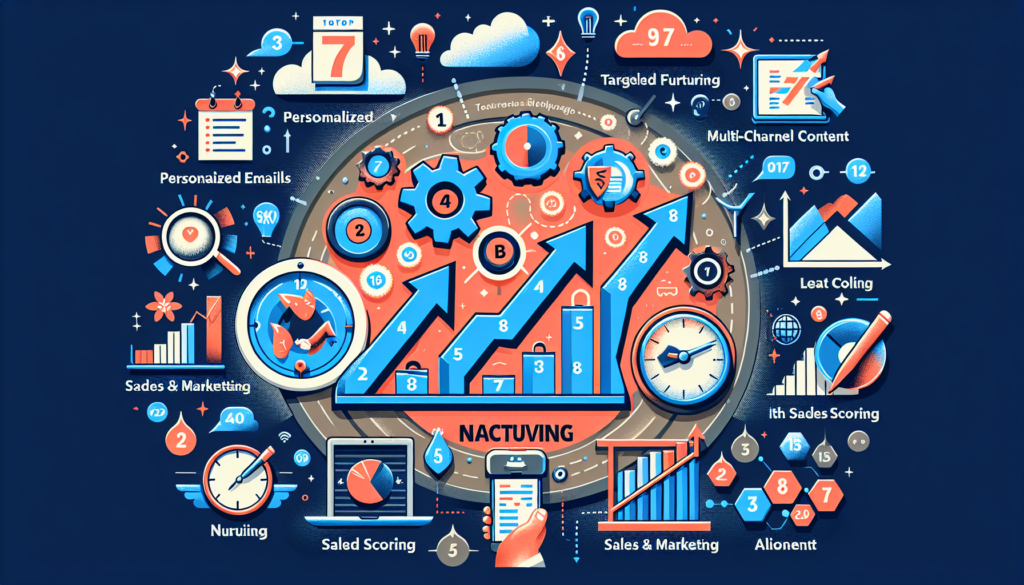Relationship marketing represents a cornerstone in building sustainable businesses. In this landscape, lead nurturing takes on vital importance, acting as a meticulously orchestrated process to guide prospects through the sales funnel. This article delves into seven advanced lead nurturing tactics with the potential to optimize the conversion rate, and ultimately, maximize the return on investment (ROI) in marketing.
Advanced Personalization and Smart Segmentation
Personalization is more than inserting a name in an email. By employing artificial intelligence (AI) and machine learning (ML), companies can analyze user behavior and preferences, creating highly personalized and segmented messages. For example, the tool Marketo uses AI to predict the best times to send communications, thus increasing open and click rates.
Implementation of Predictive Lead Scoring
Lead scoring is a technique that assigns scores to each lead based on their interaction with the brand. Using predictive models, the potential for conversion of each contact can be forecasted. Platforms like Pardot and HubSpot incorporate these kinds of systems, allowing prioritization of leads that are closer to a purchase decision.
Automation of Campaigns with Intelligent Workflows
Automated workflows enable relevant content to be sent to the user at specific times, based on triggers like website activity or previous email interactions. The use of tools like Sharpspring allows for dynamic and context-sensitive management of leads at each stage of the funnel.
Utilization of Dynamic Content
Dynamic content adapts in real time to the reader’s needs and interests. Content management systems like Adobe Experience Manager offer modules that alter messages depending on user data collected, ensuring that the information is always relevant and engaging.
Multichannel Approach and Channel Orchestration
To effectively nurture leads, it’s crucial to manage multiple channels while maintaining a coherent and unified message. Tools like Omnisend allow communication to be unified across emails, SMS messages, push notifications, and more, ensuring a seamless and cohesive omnichannel experience.
Continuous A/B Testing for Constant Optimization
A/B testing allows comparison of two versions of the same content to determine which generates better results. Systematic application of this technique with tools like Optimizely ensures the generation of data-based insights, enabling iterative and evidence-based refinement of content strategies and offers.
Predictive Analysis and Customer Journey Tracking
Understanding the customer journey is key to providing successful lead nurturing. Platforms like Salesforce Einstein offer predictive analytics that model and anticipate the customer’s steps, allowing foresight into and satisfaction of their needs before they arise.
Case Studies and Evidence of Success
The lead nurturing strategies named are supported by multiple case studies. Leading companies in various industries have adopted these tactics and have seen tangible improvements in their conversion rates. A notable example is Adobe, which, after implementing dynamic content, reported an increase in user engagement and improved conversion in their marketing campaigns.
The process of lead nurturing is in constant evolution, forced by technological advances and changes in consumer behavior. Companies that adopt a proactive approach and stay at the forefront of implementing these tactics are better equipped to establish deep connections with customers and ensure optimized conversions. As we move forward, emerging new technologies such as natural language processing (NLP) and augmented reality could be the next frontiers in relational marketing, opening a world of possibilities for personalization and interactivity in lead nurturing.

